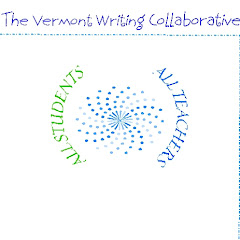Writing for Understanding Instruction
Teacher Plan
Teacher: Meg Clayton Class: 5th Grade Math Date: July 2011 Writing genre: Procedure
|
CENTRAL IDEAS
Content: Math: Students will understand and use several different multiplication algorithms for solving multi-digit multiplication problems.
Reading: Re-reading and paraphrasing help build deep understanding of text.
Writing: Students will be able to explain one multiplication algorithm by using logical steps and clear diagrams.
|
| FOCUSING QUESTION | FOCUS(answer to question) |
|
How do you multiply multi-digit numbers?
|
You use an algorithm such as: · lattice method · partial products method · traditional method
|
|
BUILDING CONTENT KNOWLEDGE, UNDERSTANDING OF WRITER’S CRAFT
| |
| · vocabulary · guided reading · text mapping · paraphrasing · summarizing · visualizing · imaging · dramatizing · oral processing/ guided conversation/ think-pair-share · experience · debating · taking notes (graphic organizers, T-charts, two column notes, etc.) · craft lessons (intro, transitions, conclusions, etc.)
| · create math lexicon (algorithm, lattice, array, row, column, factor, product, digit, diagonal, horizontal, vertical, carry over) · use Frayer Model for math terminology · paired reading aloud from Student Reference Book, Dynamath Magazine · model math procedures using manipulatives · role play “teacher” for younger students · play games (Multiplication Wrestling, Multiplication Bull’s Eye, Number Top-It, Baseball Multiplication, Beat the Calculator, Fastest Draw in the West) · work in Student Journals · 5 minute white board math activities · benchmark ordering activity in groups of 4 · class benchmark discussion · creation of class procedure check list · acting out several benchmark procedures to see if they work · using Microsoft Works “Track Changes” feature for peer conferencing |
|
STRUCTURES How will students know how to organize their ideas and construct the piece of writing?
| |
|
· graphic organizers · teacher-written models · various types of templates or frames (ex. Painted Essay)
| · procedural writing frame · teacher-written model · class composed model · look at a variety of real world procedures for examples (game instructions, recipes, operation manuals, EDM Student Reference Book, Student Planner reference section) · “Track Changes” review views (original, original with mark-up, final, final with mark-up) |
|
WRITING / REVISING How will students draft/revise so that their final writing is clearly focused, organized, and developed to show understanding of the central ideas?
| |
|
· group write, fully or in part · write section at a time · write full piece independently · revise/share full group · revise/share partners · proofread w/tubaloos
|
· Group write the traditional multiplication algorithm on SMART Board. · Revise as a class using “Track Changes” · Independently choose another multiplication algorithm to explain to classmates or parents. · Share with a classmate who struggles with that algorithm. Classmate adds revision/editing suggestions via “Track Changes” on Word. · Students revise/edit and share procedures in class “How to Multiply” Manual · Students use one another’s procedure pieces to assist in understanding different algorithms |
|
LESSON SEQUENCE What steps will I follow so that students are able to effectively show their understanding in writing? | |
| Math Content Sequence: · individual K-W-L charts for Multi-digit Multiplication · class word splash of math terms that apply to multi-digit multiplication · ongoing games to practice place value and multiplication skills · students fill out survey on comfort/skill levels with various multi-digit multiplication methods · students check work by solving at least one different way · students work in partnerships to correct one another’s work
| Procedural Writing Sequence: Prewriting: · collect samples of math procedures · highlight procedure text features/formatting in models (introduction, materials list, bulleted/numbered steps, hints, sequential ordering, glossaries, diagrams, audience needs, conclusion) · in groups of 4, rank order the procedure benchmarks · group consensus on order is shared with class · class generates a checklist of effective procedure writing techniques based on benchmark discussion Class Model on SMART Board: · class reviews mentor text examples of procedure introductions · highlighting of intro. features · class composes group introduction for traditional multi-digit multiplication algorithm procedure piece · class composes body of procedure piece · class concludes piece · class model is shared with the 6th graders for feedback via “Track Changes” · class revises/edits based on 6th grade feedback. Independent writing: · students choose an algorithm with which they are very comfortable. · Based on class survey information, students select a classmate for whom that method is difficult · Students write directions for their classmate to follow and understand · Classmates read and attempt to follow one another’s procedures giving feedback through”Track Changes” · After revising and editing, student pieces are published in a class algorithm manual which becomes part of the math library
|
|
ASSESSMENT How are students doing? What are my next steps as a teacher?
|
|
· students self-assess using the class generated checklist/scoring guide · teacher assess using class scoring guide and state procedure rubric · continued math skill and vocabulary instruction · transferring procedure writing skill by using as part of regular assessment with other math content (Students who can explain how to do a math procedure have internalized it.)
|
|
NEXT STEPS Gradual release of responsibility
|
|
· 2nd and 5th grade buddies traditionally make holiday ornaments together. It would be great if the 5th graders could write procedure pieces for their 2nd grade buddies to follow. · Students can choose to participate in the Caledonian Record Recipe Contest by contributing original recipes which demonstrate procedural writing skills
|
